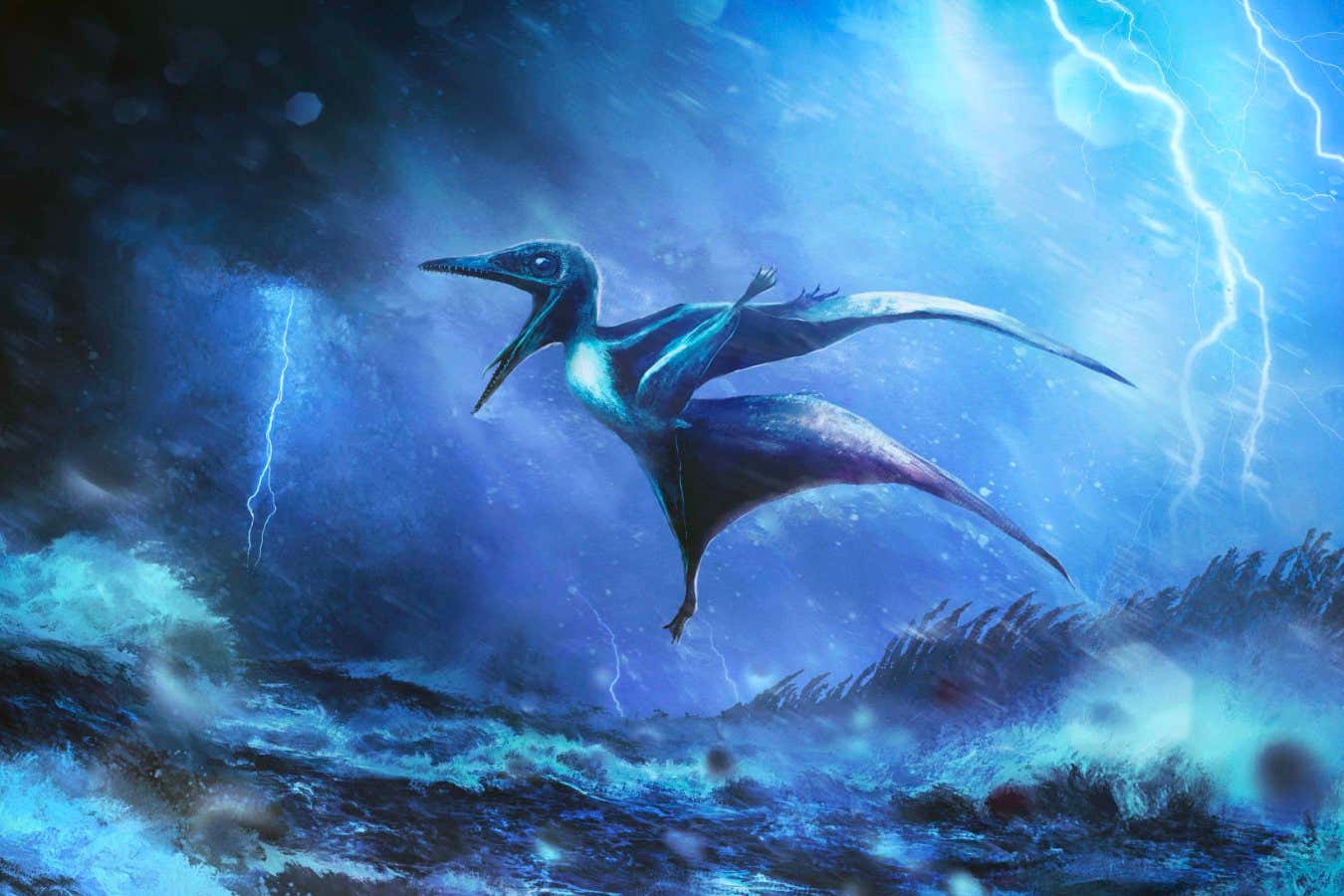
An artist’s impression of a pterodactyl hatchling struggling against a tropical storm
Rudolf Hima
Baby pterodactyls apparently flew within days of hatching – but some broke their wings in rough storms that sent them crashing into a lagoon where they drowned.
Very young pterodactyls had wing structures similar to adults, with the power and aerodynamic features that would enable flight. Even so, palaeontologists have long debated whether such hatchlings could actually fly.
At the Solnhofen site in southern Germany, hundreds of pterosaur fossils lie encased in limestone. While inspecting some of them under ultraviolet light at the Museum Bergér in Harthof, David Unwin and Robert Smyth, both at the University of Leicester, UK, discovered a broken wing in a Pterodactylus antiquus hatchling. Later, they came across another tiny hatchling with the exact same break in the other wing.
“We were shocked,” says Unwin. “And we’re not easily shocked. It just sort of leapt out of the rock when we put the UV light on it. We both kind of went, ‘Bloody hell! Look at this!’”
Unwin and his colleagues estimated that the two animals – with wingspans of only 20 centimetres and bones still in early growth stages – lived about 2 million years apart, roughly 150 million years ago. At the time, the site was part of an archipelago with numerous islands and seawater lagoons, where occasional, severe tropical cyclones would cause rapid underwater mudslides that trapped and preserved fallen animals.
The hatchlings had healthy skeletons except for a clean, angled break in the humerus – the upper arm bone that anchors the wing – with rotation of the bone and no healing, meaning the animals died just after the fracture. The injuries resemble typical wing overload injuries that occur in adult birds and bats flying through sea storms.
A juvenile Pterodactylus antiquus skeleton from Solnhofen, Germany
University of Leicester
“The best explanation we have for these two poor, unfortunate pterosaurs with broken arms is that they were in the air when they had their accident,” says Unwin.
“If we’d had a very calm water surface, chances are your little pterosaur would float – and they could probably float for a long time. But if you have these tremendously wave-tossed surfaces, they’re going to get waterlogged really quickly, which is what you need for them to sink to the bottom like that.”
The findings help close the long-standing debate by providing direct evidence of flight in these pterosaur hatchlings, the researchers say.
“I don’t think they just hatched out and leapt into the air,” says Unwin. “But they were probably in the air very shortly after they were born, and that’s one of the reasons we have these very young individuals in the fossil record today.”
Topics:
Source link : https://www.newscientist.com/article/2495130-baby-pterosaurs-could-fly-right-after-hatching-but-crashed-in-storms/?utm_campaign=RSS%7CNSNS&utm_source=NSNS&utm_medium=RSS&utm_content=home
Author :
Publish date : 2025-09-05 16:00:00
Copyright for syndicated content belongs to the linked Source.